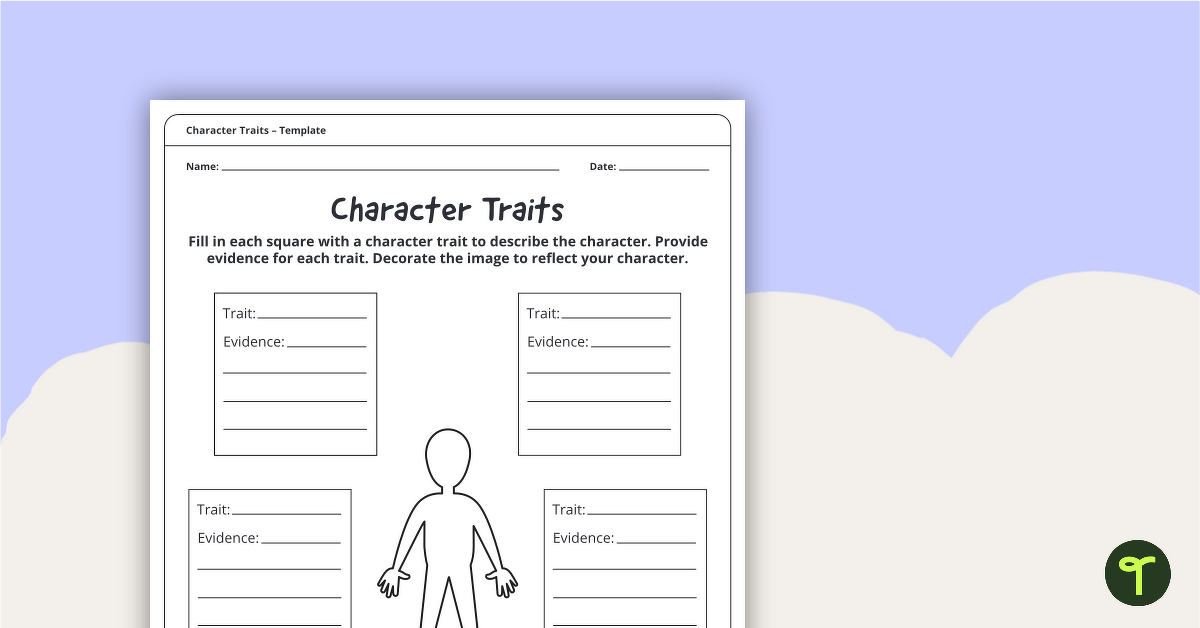Describe the most notable mental and moral qualities of a real or fictional person.
Develop a Knack for Character Analysis
After reading a biographical or narrative text, have your students identify the six character traits that best describe a real or fictional person, using evidence to justify their conclusions. They’ll then decorate their page with drawings that illustrate their thoughts.
By completing this activity, students demonstrate an ability to describe a person’s traits, motivations, or feelings (historical or fictional) and explain how their actions contribute to a sequence of events.
Scaffolding + Extension Tips
In addition to individual student work time, use this creative writing worksheet as a:
- Literacy group activity
- Biography project assignment
- Homework assignment
- Small group or whole-class review (via smartboard)
Additionally, students who need more support with these concepts would benefit from completing this worksheet in a 1:1 setting or guided reading group.
Easily Download This Resource
Use the dropdown icon on the Download button to choose between the PDF or Google Slides version of this resource.
You can also turn this teaching resource into a sustainable activity! Print a few copies on thick card and slip them into dry erase sleeves. Students can record their answers with a dry erase marker, then erase and reuse.
Additionally, project the worksheet onto a screen and work through it as a class by having students record their answers in their notebooks.



0 Comments
Write a review to help other teachers and parents like yourself. If you'd like to request a change to this resource, or report an error, select the corresponding tab above.